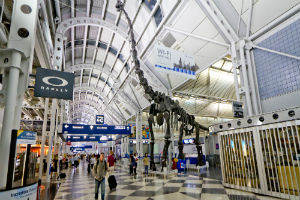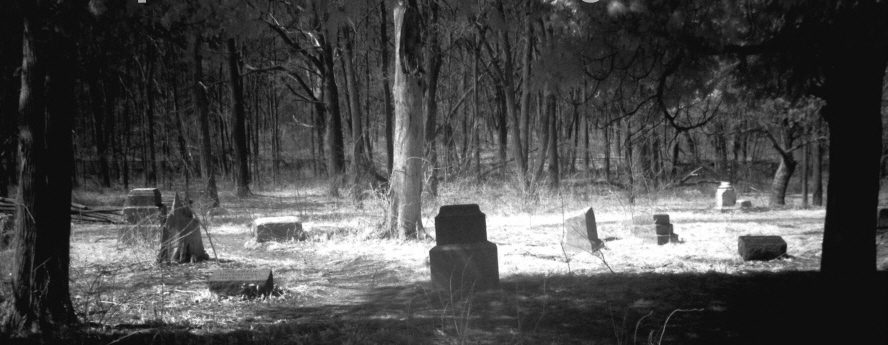Artist of the Month - Darby Ortolano
- Details
 Darby Ortolano is an artist in Murphysboro. She’s been creating art for nearly 50 years. Ortolano works mainly with clay, creating functional pottery and wall pieces.
Darby Ortolano is an artist in Murphysboro. She’s been creating art for nearly 50 years. Ortolano works mainly with clay, creating functional pottery and wall pieces.
How long have you been an artist or when did you start? Was there a single incident or moment when you realized this was your passion and if so, tell us about it?
I started in 1970! That was a long time ago, and I was a young single mother living and working in New York City. For the next 20 years, I took many ceramic classes and shared a group studio and store in the East Village. Essentially, I never stopped working at my art, even as I pursued a career in human resources. In 1990, I left New York to attend the Kansas City Art Institute  (KCAI). I was on my way to some serious work and study.
(KCAI). I was on my way to some serious work and study.
Illinois has been factored into your work in the past. What does being able to live and work in Illinois mean to you?
I came to Illinois to attend the Master of Fine Arts program in Ceramics at Southern Illinois University Carbondale (SIUC). After two years at KCAI, I knew I would never give up my work in clay. The program here was known for its focus on “functional pottery,” and I spent three glorious years working as hard as I’ve ever worked. When I graduated, I was invited to stay as a visiting instructor in the ceramics program at SIUC for two years. Teaching and living in Illinois prepared me to stay in the area. Within a short time, I was hired by John A. Logan Community College. I spent the next 12 years teaching full-time in their art program.
 What opportunities does Illinois present to local Illinois artists?
What opportunities does Illinois present to local Illinois artists?
I live in a rural part of Illinois, and the opportunities to show are limited. There is a venue connected to the Carbondale Community Art program (which is partly funded by the Illinois Arts Council), a scattering of galleries, an outdoor fine art fair and SIUC still has holiday craft fairs. We miss the Illinois State Museum facility at Rend Lake, which was a wonderful venue for Illinois artists. The SIUC University Museum has been closed for a year but is now projected to reopen next year.
The opportunity to be connected to other artists is a reason many artists stay here. Also, the cost of living is definitely lower than any big city, and this area is beautiful. We are only two hours away from St. Louis, four hours from Memphis and Louisville, and five hours from Chicago.
What do you like about Illinois?
Aside from the family and friends I have here, I would have to say that rural Southern Illinois is astonishingly beautiful. Gone are the flat plains of the Illinois heartland; here you run into the hills, valleys and cliffs of the Shawnee National Forest. There are gorgeous lakes for boating and fishing; vibrant grape growing and winemaking businesses with award-winning wines; and hiking, canoeing, horseback riding and biking are all easily accessible. In response to this natural beauty, there is a growing tourism business with multitudes of secluded cabins for rent for those who wish to experience the activities and landscape of the area. Giant City State Park is unique and beautifully maintained. Our local towns – Carbondale, Murphysboro, Cobden, Alto Pass, and Anna to name just a few – offer areas of charm and culture. And Southern Illinois University Carbondale offers venues, award-winning plays, musicals, concerts and well-known lecturers. Because of the influence of the foreign-born professionals and students, we also have a diverse population and excellent restaurants offering a variety of cuisines. My hometown of Murphysboro is also the Barbeque Capital of Illinois!
is also the Barbeque Capital of Illinois!
What is your favorite medium to work in?
I work in clay, and at various times that has included porcelain, stoneware and earthenware. I now work mainly in mid-range white stoneware. I also use a variety of glazes, and throughout my career have used other types of clay surfaces. I primarily make functional ware, and I enjoy playing around with forms and combination of forms to enhance the experience of using functional pottery. Most recently, however, I’ve been inspired to create intricate wall sculptures, which has been most satisfying!
Where can people view or purchase your work?
I have work at the Anthill Gallery in Cobden and the Carbondale Community Arts shop304 showcase. You can click here to see my work on Facebook. I will soon be selling online, which I will announce on my Facebook page. You can also click here to see my work on the Oak Street Art Group’s website. The Oak Street Art Group is made up of five artists, all who live and work in the Murphysboro area. We sponsor an Oak Street Fine 
What artist inspires you and why?
I would have to say that I am inspired by the history of ceramic art, primarily Asian. I was trained as a functional potter, which includes paying attention to proportion, balance, form, surface treatment and use. Those attributes were at their height in historical Japanese, Chinese and Korean pottery. I have taken those standards and infused them with my own aesthetic interests, which primarily center on forms from the natural world. Early on, I decorated my pots with colorful abstractions of natural forms. More recently, the functional work can be either simply covered with a soft white glaze, or by a colorful bright glaze. The forms themselves relate to nature’s forms. I let my work speak for itself. My recent sculptural work is directly inspired by the natural world and my interpretation of it.
TBT: O’Hare International Airport opens for commercial flights
- Details
 This week in 1955, Chicago O’Hare International Airport, among the largest and busiest airports in the world, opened for commercial flights for the first time.
This week in 1955, Chicago O’Hare International Airport, among the largest and busiest airports in the world, opened for commercial flights for the first time.
At the time, Chicago had become the nation’s hub for the passenger-airline industry and Midway Airport, located on the city’s South Side, had grown overwhelmed by commercial traffic. The solution was to expand O’Hare Airport.
Before O’Hare opened for commercial flights, it was used primarily as a manufacturing plant and a United States Air Force base since the mid-1940s. Originally called Douglas Field and then Orchard Place Airport, it was renamed after World War II flying ace and Congressional Medal of Honor recipient Edward “Butch” O’Hare in 1949.
By 1958, O’Hare had greatly expanded and was serving more than 10 million passengers annually. By the end of the century, that number had increased to 70 million passengers per year, making it the most congested airport in the world.
Did you know? Bachelor’s Grove Cemetery on the Southwest side of Chicago is claimed to be one of the most haunted graveyards in America.
- Details

It is rumored to have been the most scandalous dumping ground for Chicago’s organized crime families during the 1920’s and 30’s. However there has been no evidence proving these claims.
Legend has it that the cemetery got its name because only men were buried in the graveyard. However, the name actually came from a family who settled in the area. Over the years, the cemetery’s name has been changed several times.
The first thing many visitors notice about Bachelor’s Grove is the destruction. It is overgrown with weeds and gravestones have been moved or broken by grave robbers and vandals. It is now surrounded by a chain-link fence to keep out trespassers. The cemetery sign disappeared many years ago, and due to the rate of vandalism, police are often present at night.
One of the most famous sightings in Bachelor’s Grove is the large ghost house. Most visitors have described it the same way: a white, two-story Victorian farmhouse, with a soft light glowing from the inside. Some say it appears further away as you walk closer to it.
If you would like to check out the cemetery for yourself there are plenty of ghost hunts and tours that bring groups to explore the cemetery at night.
Walgreens expansion to create 300 more jobs in downtown Chicago
- Details
Walgreens is expanding its technology office in Chicago, which will bring 300 new employees to the central loop district through new hires and relocations from the company’s headquarters in Deerfield.
is expanding its technology office in Chicago, which will bring 300 new employees to the central loop district through new hires and relocations from the company’s headquarters in Deerfield.
The Walgreens retail pharmacy and technology team will be located in the Sullivan Center. The 300 new jobs will support the company’s largest line of business, the technology side that handles pharmaceutical sales.
Walgreens opened its technology office in 2010 and currently serves as its digital hub. The technology team is responsible for the computer systems that operate stores across the United States.



